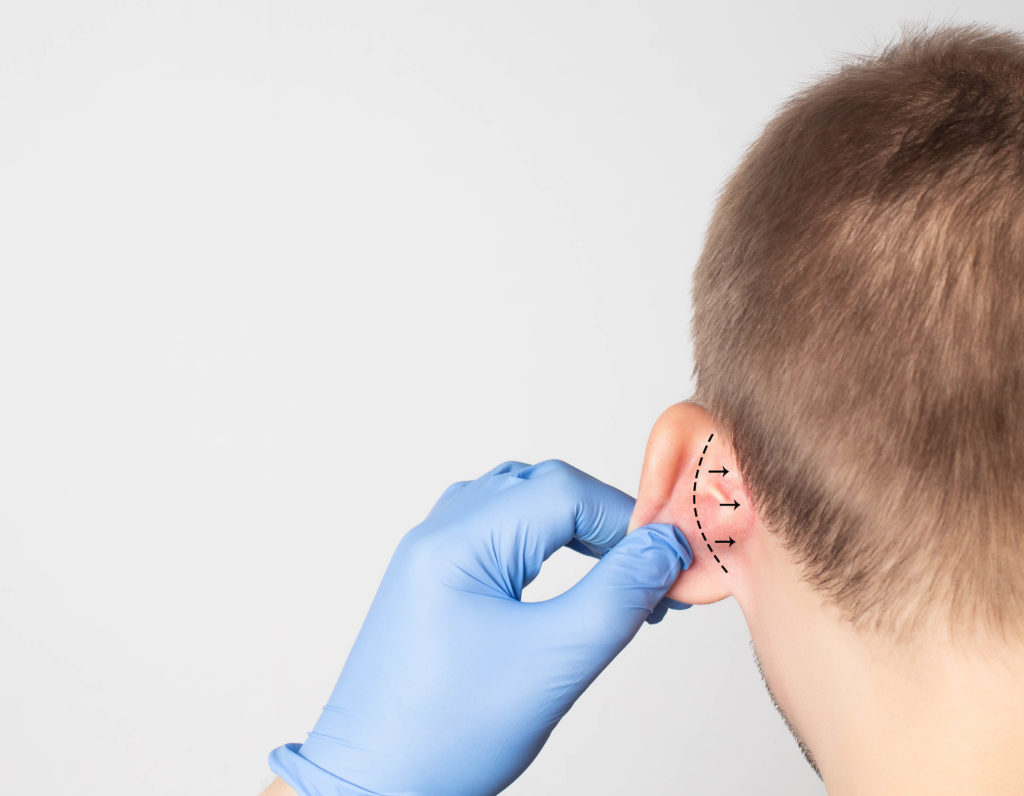Ears that are too large or stick out too far from the head can cause emotional discomfort for both adults and children. Ear surgery, also known as otoplasty, can be performed to reshape or pin back the ears, providing relief from self-consciousness.

What Can Otoplasty Address?
Ear surgery can be performed to correct a number of aesthetic issues. Some of the concerns addressed by otoplasty include the following:
- Protruding ears
- Overly large ears
- Cupped ears
- Birth defects
- Abnormally shaped ears
- Trauma from ear piercing or other injuries
- Adult dissatisfaction with previous ear surgery
Dr. D’Souza will discuss the details of your surgery with you during your consultation.
Who Can Undergo Otoplasty?
Ear surgery is one of the few plastic surgery procedures performed on both children and adults. Prominent ears may lead to teasing during childhood, which can cause emotional distress and self-esteem issues later in life. Luckily, otoplasty can be performed once the ears reach their final size, usually around the age of six.
How Is Otoplasty Performed?
For children, otoplasty is typically performed under general anesthesia to ensure that they stay still during the procedure. Adults can usually undergo the surgery using local anesthesia with sedation. The incisions can be made behind the ear or within the curves of the ear, depending on the concern being addressed.
Once the incisions have been made, the cartilage of the ear will be removed or reshaped as needed. If the ear is misshapen due to an injury or birth defect, it can be reshaped using sutures or scraping techniques to achieve the proper contour. The incisions will then be closed with additional sutures.

What Can I Expect During My Recovery?
Once your surgery is completed, your ears will be wrapped in bandages that will provide support and protection. There will be some discomfort, but this can be alleviated with over-the-counter medications. Your bandages will be removed after a few days, and then you will have to wear a protective headband at night for about six weeks. Most patients can return to work as well as most of their normal activities in about a week, and the final results of your surgery will be apparent after two weeks. The results of your ear surgery should be permanent unless you suffer an injury or other event that could affect the appearance of your ears.
For more information about ear surgery, give us a call at 760.637.5288, or schedule a virtual consultation.
